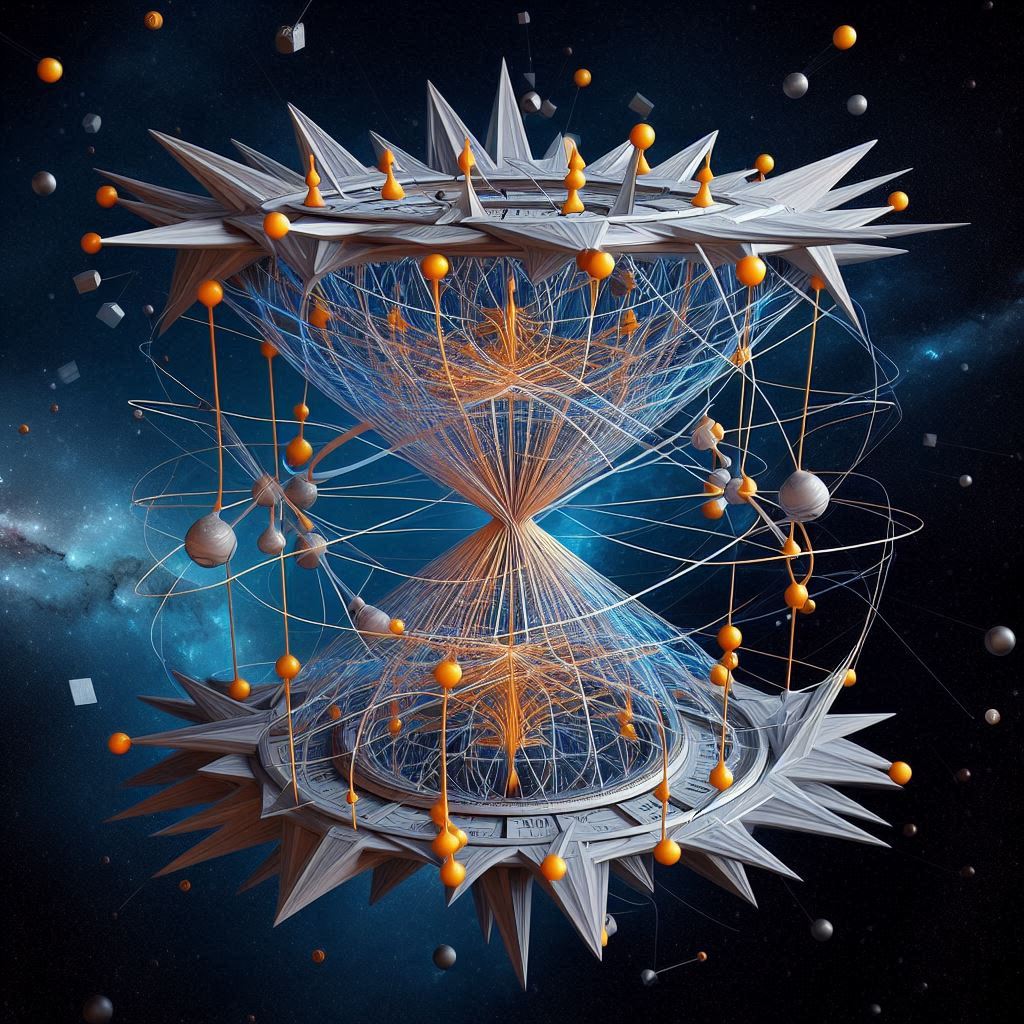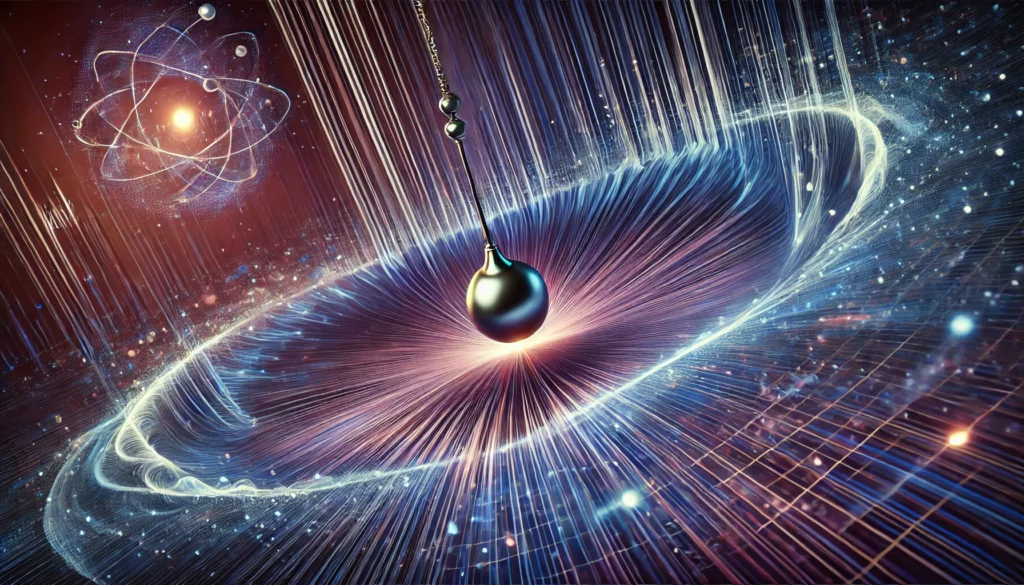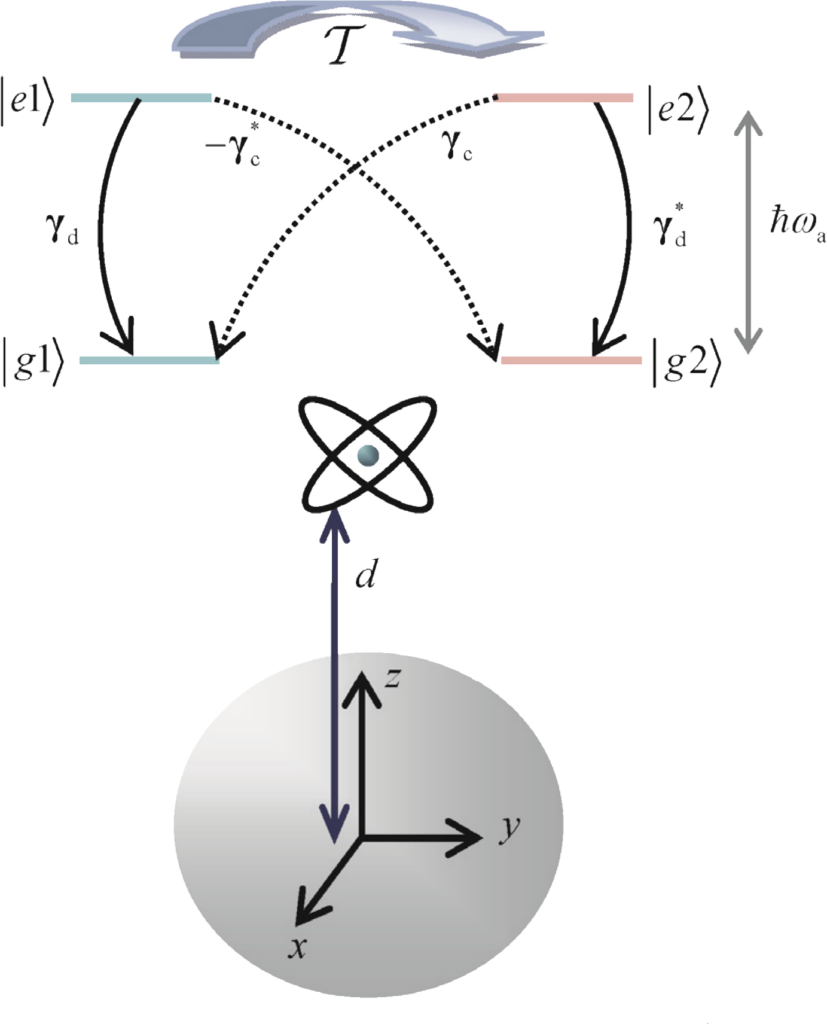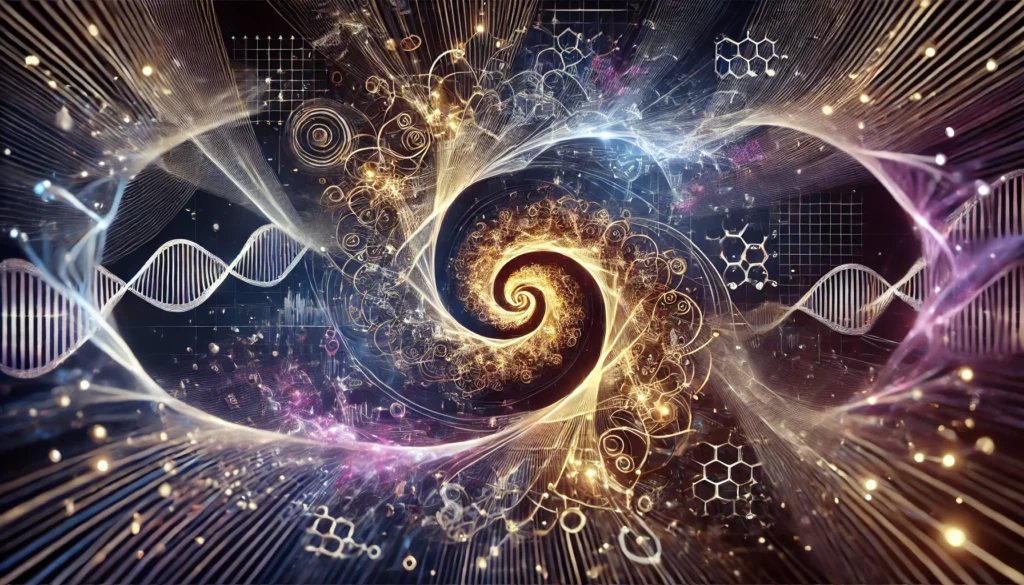
Introduction
String Time Crystal Chiral Supersymmetry Breaking
Time crystals are a state of matter characterized by a periodic structure in time, unlike conventional crystals which have a repeating pattern in space. In string theory, time crystals can emerge due to the spontaneous breaking of time-reversal symmetry, influenced by the intrinsic properties of particles and their quantum interactions. This phenomenon is critical to understanding complex quantum behaviors, especially in chiral systems where symmetry and asymmetry play vital roles.
Chiral Supersymmetry Breaking
In quantum field theory, chiral supersymmetry breaking involves mechanisms that affect the chirality of particles, which is their inherent handedness, distinguishing between left- and right-handed particles. These mechanisms are often influenced by interactions that specifically break supersymmetry in a way that favors one chirality over the other. This can have significant implications for the behavior of fundamental particles and fields, leading to observable differences in physical properties.
Chiral supersymmetry breaking is crucial in understanding the asymmetries that arise in the quantum world and how these asymmetries can lead to novel states of matter, such as chiral time crystals, with unique temporal periodicity.
- For an in-depth study, refer to the publication on Chiral Supersymmetry.

Spontaneous Symmetry Breaking and Time-Crystal States

The formation of time crystals in chiral atomic systems is a direct consequence of spontaneous time-reversal symmetry breaking. In such systems, the intricate interactions between particles, quantum states, and time-reversal symmetry lead to the emergence of time-crystal-like states. These states exhibit a repeating pattern not in physical space but in the temporal domain, offering new insights into how time and matter interact at a fundamental level.
This process is not only theoretical but has potential experimental realizations, where chiral atomic systems could exhibit unique time-dependent behaviors due to these symmetry-breaking mechanisms. Understanding this symmetry breaking provides a deeper insight into how periodic time structures can arise naturally in quantum systems.
A Kramers two-level system is positioned at a distance ddd from a plasmonic nanoparticle. The energy states and the transition dipole moments of this two-level system are depicted in the top panel. The ground states and the excited states are interconnected by the time-reversal operator T.
- Read more about the spontaneous symmetry breaking here.
Supersymmetry Breaking on the Brane
In string theory, supersymmetry (SUSY) breaking on the brane is a phenomenon that occurs due to interactions between various elements such as non-mutually BPS (Bogomol’nyi-Prasad-Sommerfield) branes and orientifolds. These interactions lead to unique tensions and a runaway potential, which can alter the dynamics of the entire system. This type of SUSY breaking plays a significant role in the evolution of the universe and in determining the stability of quantum states within string theory frameworks.
The concept of SUSY breaking on the brane also involves understanding how the properties of different types of branes interact, contributing to the overall stability or instability of the system. This process has profound implications for both cosmology and particle physics, providing a bridge between theoretical predictions and potential experimental findings.
- For details, see this research on Supersymmetry Breaking.

Chiral String Time Crystals
Chiral string time crystals are theoretical constructs that describe a unique form of time crystals influenced by the chiral properties of particles. In string theory, these time crystals emerge due to the spontaneous breaking of time-reversal symmetry, leading to temporal periodicity that is intrinsically linked to the chirality of the particles involved.
The chiral nature of these time crystals means that their time-dependent behavior is asymmetric, providing new opportunities for exploring how time symmetry can be broken in fundamental physics. These crystals can serve as a potential platform for studying time-dependent quantum effects and how the properties of strings can lead to novel time structures that are absent in non-chiral systems.
- More on Chiral String Time Crystals is available here.
Phantoms and Bose-Einstein Condensate (BEC) Framework
Phantom energy is a hypothetical form of dark energy characterized by an equation of state where the pressure is less than the negative of the energy density. When combined with Bose-Einstein Condensates (BECs), which are states of matter formed by bosons cooled to temperatures very close to absolute zero, this framework provides a macroscopic quantum system where time-crystal-like behavior can be studied.
In this framework, the interaction between phantom energy and BECs can lead to the formation of periodic structures in time, analogous to time crystals. These periodic time structures offer a unique perspective on how quantum systems can exhibit behaviors typically associated with classical periodic systems but on a quantum scale.
- Learn more about this framework in the article Phantom Energy.
Complex Interactions in String Theory
The interactions between branes, chiral strings, and the quantum states of phantom energy are described by quantum field theories and string compactifications. These complex interactions are crucial for understanding the formation and stabilization of time crystals within the string theory framework.
String compactifications involve reducing the higher-dimensional aspects of string theory to a more manageable form, allowing for a better understanding of the interactions that take place. These interactions can lead to the formation of time crystals, where the stability and dynamics of the system depend on the precise nature of the compactification and the properties of the interacting fields.
- Explore more about these interactions here.
Quantum Generators and the Future of Quantum Computing
Quantum generators are devices that generate quantum states or perform quantum operations. Integrating chiral string time crystals into quantum generators could enhance the stability and coherence of quantum states, potentially leading to more robust and fault-tolerant quantum computing systems.
By leveraging the unique properties of chiral string time crystals, quantum generators could achieve higher levels of stability and accuracy in quantum computations. This could pave the way for new developments in quantum computing, particularly in areas where maintaining coherence is a significant challenge.
Summary of Chiral String Time Theory
This theory is a complex field of theoretical physics that combines several advanced concepts:
- Supersymmetry Breaking on the Brane: Involves interactions between non-mutually BPS branes and orientifolds, affecting the stability and dynamics of the system.
- Chiral String Time Crystals: Theoretical constructs exhibiting time crystals with chiral properties that emerge through symmetry breaking, leading to unique temporal behaviors.
- Phantoms and BEC Framework: Combines phantom energy and Bose-Einstein Condensates to study macroscopic quantum systems and time-crystal-like behaviors.
- Complex Interactions: Advanced theories describing the intricate interactions in chiral systems, string compactifications, and the resulting time-crystal formations.

